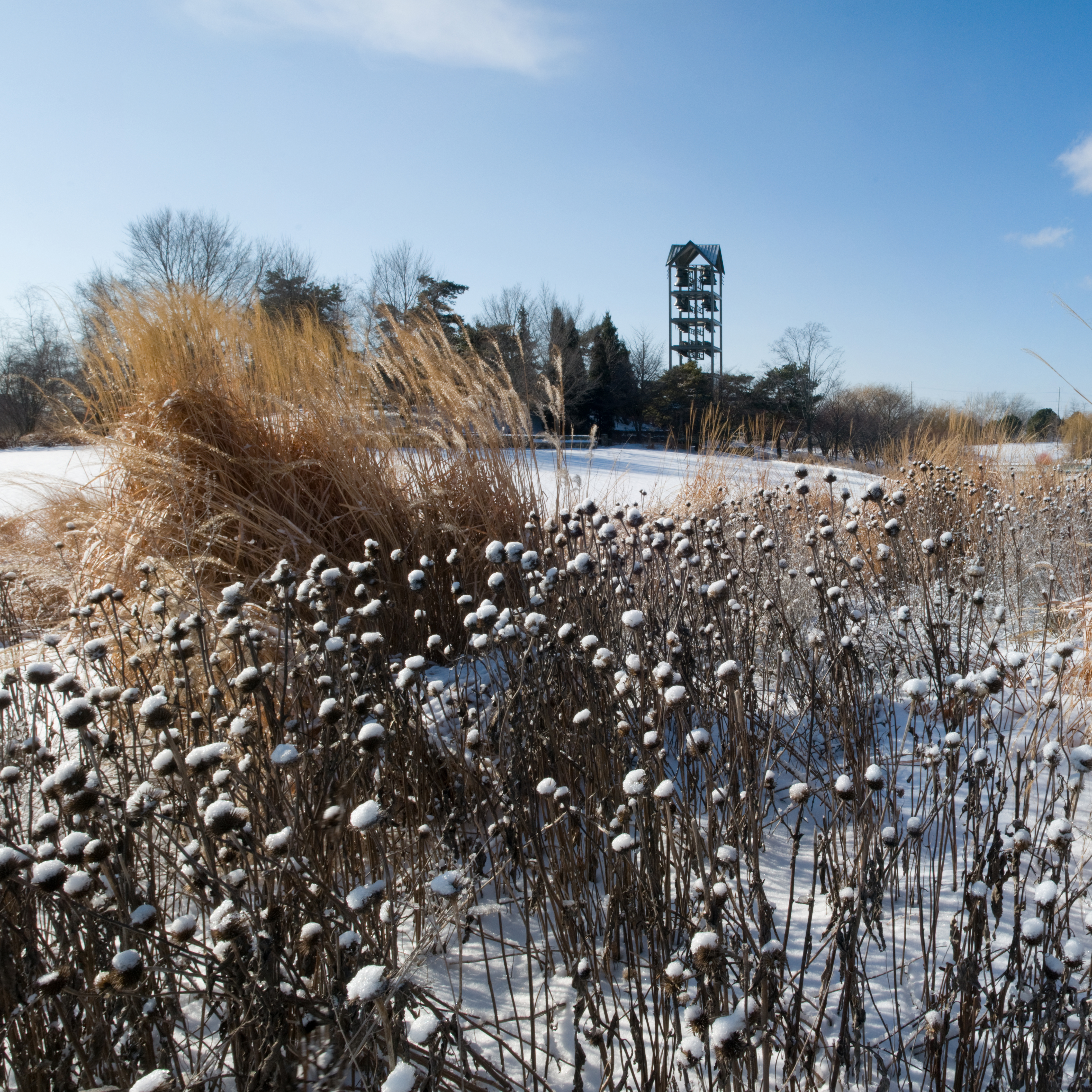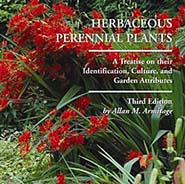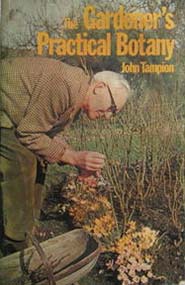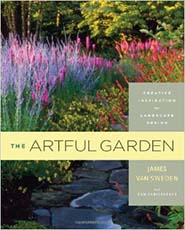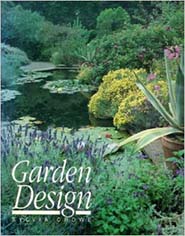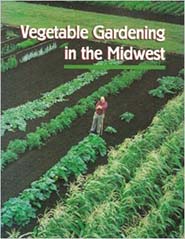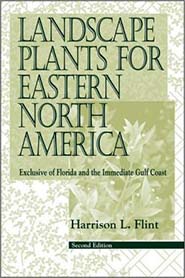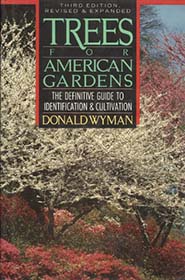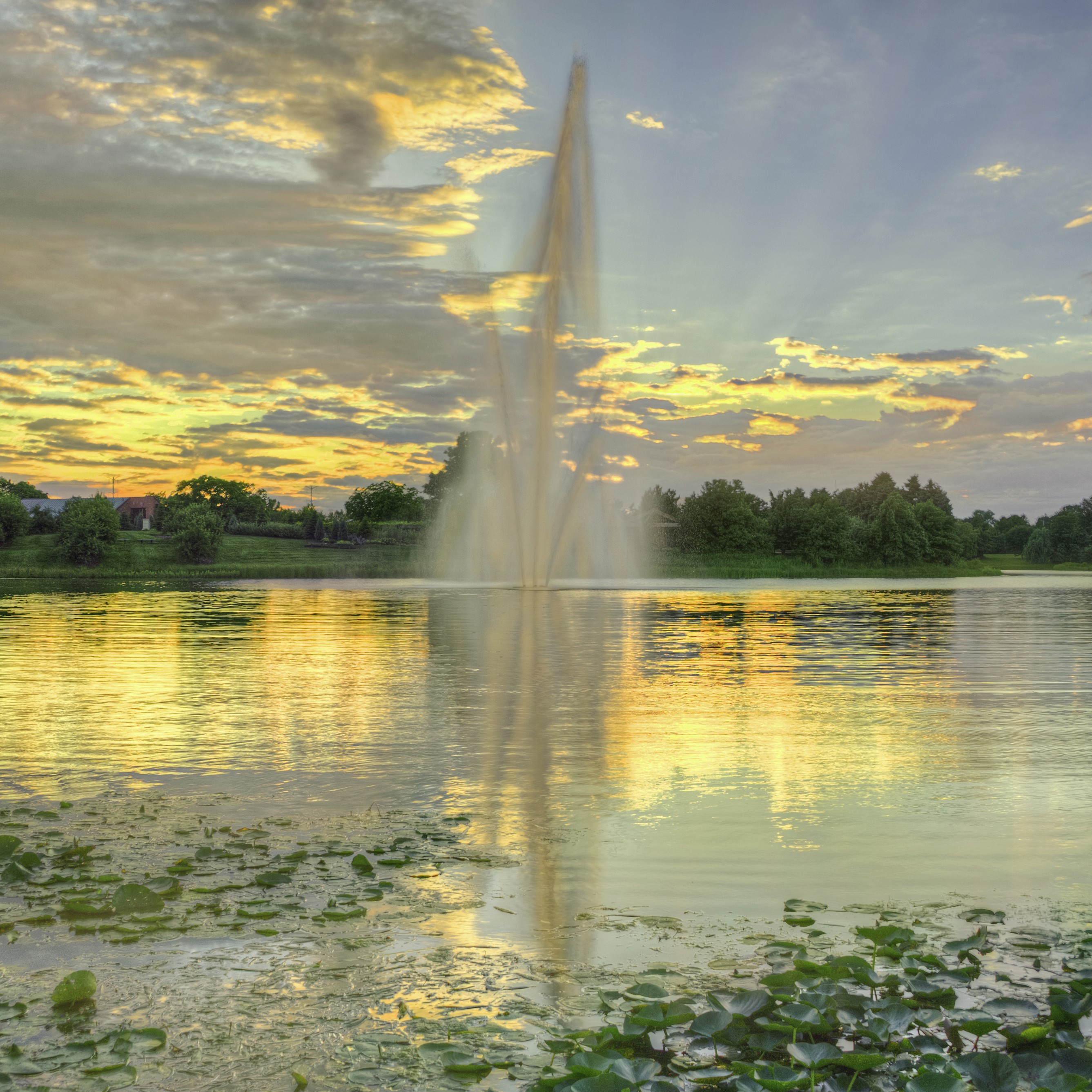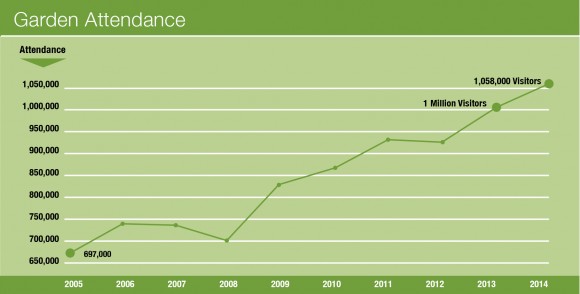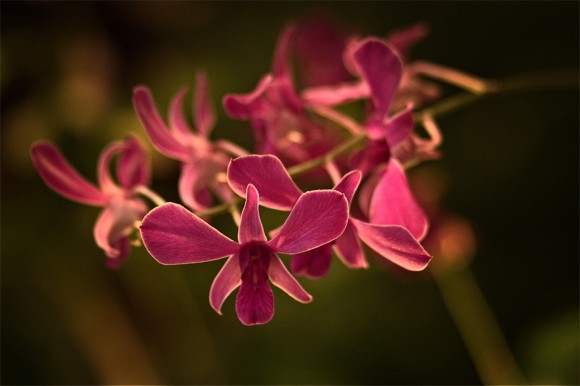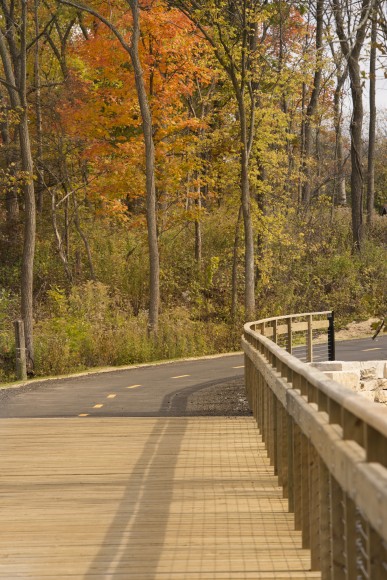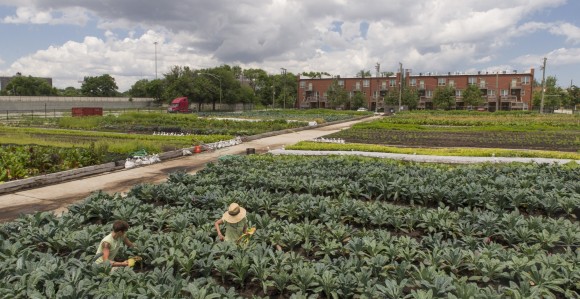January is such a satisfying month for gardening…especially of the armchair variety.

Just think: no digging, no hauling, no sweating. Instead, you have the opportunity to sit in the slowly increasing sunlight, with an inbox or mailbox full of gardening PDFs and catalogs and books. It’s a time to dream and learn and plan.
In short, January’s a fine month for reading about gardening.
Every gardener has his or her favorite books and resources that they turn to in winter. This got us wondering: what does our head horticulturist Kris Jarantoski pull off the shelf when he’s thinking about his next gardening endeavor?
His answers reflect his 30 years of garden experience here—indeed, Kris was the Garden’s very first horticulturist—and a lifetime love of the natural world.
Herbaceous Perennial Plants by Allan Armitage
Its full title, Herbaceous Perennial Plants: A Treatise on Their Identification, Culture, and Garden Attributes, gives you the sense that this is an authoritative resource, and this gardening classic doesn’t disappoint. Armitage is that rare garden writer who is informative, interesting, and witty all at once. “If my mother had known that the spores overwintered on the blistered, ignored leaves by the garage, she would have removed them. Actually, she would have told her sons to do it, and we would have probably taken the Lawn Boy to them,” Armitage writes of hollyhocks—and his youth.
“This is my most-used reference book,” Kris admits. “We have lots of herbaceous perennials here at the Garden, and I do at my home, too. Armitage’s book is easy to use, up to date (it’s on its third edition), and if you want one place to go for reference, this is it.”
Garden Masterclass and The Essentials of Garden Design by John Brookes
Walk through the blue gates of our English Walled Garden and you’ve entered the world of John Brookes. A visitor favorite since its 1991 opening, the garden’s six “rooms” feature all that Brookes is known for: impeccable thought process, original design, and a masterfully creative use of plants.
Kris was there during every step of that Garden’s implementation. “John Brookes is brilliant,” he shares. “The way he sizes up a landscape, his sense of proportion, and his ability to know how things will work together is amazing. I’ve used his grid pattern on page 83 of Garden Masterclass at my own home—gardeners of any skill level can benefit from it.”
The Gardener’s Practical Botany by John Tampion
An older (1973) but beloved resource, Tampion’s book is important “because anybody who gardens should know how plants work—how they breathe and take up water and have a vascular system,” Kris explains. “If you know how and why plants work—basic, practical botany—then you understand what’s happening when a rodent girdles your fruit trees.” Can’t find Tampion’s book? Try Biology of Plants by Peter Raven/Ray Evert/Susan Eichhorn—just one of the great botany books on the shelf at the Lenhardt Library.
The Artful Garden by James van Sweden
Less a reference book than a work of art about the art of gardening, 2011’s The Artful Garden became the final book by the late landscape architect James van Sweden (who died in 2013). By relating gardening to the arts—music, painting, dance—van Sweden “opened my mind as to how things work together in a landscape,” Kris says. “He was the visionary behind Evening Island, and the great photographs in this book remind me of how we thought about every aspect of the design as we worked on it.” A fine book for daydreaming about gardens large and small.
Garden Design by Sylvia Crowe
A true lesson in design by a grande dame of British landscape architecture, this book teaches on the grand and historic scale. Sylvia Crowe created cityscapes, public properties, and institutional landscapes, but she also understood the importance of the land and was one of the first to act on the idea of sustainability. “This is one of the books I return to again and again,” Kris notes. “Sylvia Crowe was ahead of her time, and her thoughts on design continue to resonate today.”
Vegetable Gardening in the Midwest by C.E. Voight and J.S. Vandermark
The secret to many an Illinois gardener’s success, this University of Illinois publication is a favorite of the state’s many master gardeners. “It’s well laid out,” Kris explains, “and the illustrations are very good. The focus is on vegetables that thrive in the Midwest, so it’s a must-read for gardeners in our area. My copy has been well used over the years!”
Landscape Plants for Eastern North America by Harrison Flint
Which perennial, shrub, or tree, would work best in that tricky corner of your yard? This is the book that tells you. With several thousand plant listings, hundreds of photographs, and handy illustrations of plants compared in youth and at maturity, Flint’s book is a solid reference for seasoned and novice gardeners alike. “Dr. Flint is from the Midwest, and he understands what works in our gardens,” Kris adds. “I think of this book as a truly local resource. His book can be hard to find, though—it hasn’t been updated over the years—in which case you can turn to Michael Dirr’s well-known Manual of Woody Landscape Plants.”
Trees for American Gardens and Shrubs for American Gardens by Donald Wyman
“These two titles are sentimental choices for me,” Kris mentions with a smile. “They’re out of date now, but they’re like old friends to me—textbooks used in the horticulture program at the University of Wisconsin/Madison when I was there. Donald Wyman set the tone and format for all the great horticultural reference books to come. When I open these books, it whisks me back to that thrilling time of learning about new plants, especially shrubs and trees.”
The magazine/periodical racks at our Lenhardt Library are a gardener’s guilty pleasure: gorgeous cover after gorgeous cover begs “pick me” for every gardening topic under the sun. A magazine browse is a fine way to spend a January day.

We asked Kris for his top magazine titles:
- Horticulture
- Fine Gardening
- The American Gardener (the American Horticultural Society’s magazine)
- Garden Design
- Chicagoland Gardening
- Northern Gardener (Minnesota State Horticultural Society magazine)
- Gardens Illustrated
- The Garden (Royal Horticultural Society magazine)
- The English Garden
Nearly all of the above titles are available at our Lenhardt Library (free checkout year-round for members!). It’s a resource that Kris knows well. “I’ve always used our library,” he says. “My dad, who was an engineer, loved books and had an extensive collection, and I inherited that love of libraries from him.”
Pull up a chair. Pull out a book. And enjoy a little armchair gardening in January.
What are your favorite gardening books and websites? Tell us your top three titles in the comments section below!
©2015 Chicago Botanic Garden and my.chicagobotanic.org

